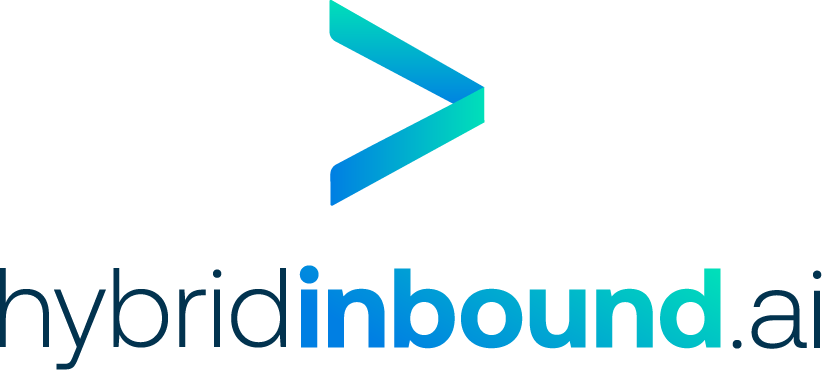How to Choose the Right Platform for Your Budget, Your Market, and Your Goals
Digital advertising is one of the most powerful growth tools available to small businesses. But knowing where to put your money is half the battle. With platforms like Google, Meta, LinkedIn, and TikTok all fighting for your budget, it’s easy to get overwhelmed or waste money chasing the wrong audience.
This guide breaks down the strengths and weaknesses of each major ad platform, explains how B2B and B2C advertising strategies differ, and gives you clear advice on how to approach digital ads whether you’re working with a few hundred dollars or tens of thousands each month.
How B2B and B2C Ad Strategies Differ
At a glance, advertising might seem similar for all businesses, but the approach shifts dramatically depending on who you are selling to. If you’re B2C, your goal is typically fast conversions. You’re focused on awareness, clicks, and immediate purchases. A customer might see your product once, click on your ad, and buy it within a few minutes. Your job is to catch their attention quickly, highlight value, and make buying frictionless.
If you’re B2B, you’re playing a longer game. You may be selling a software platform, consulting service, or another high-consideration offer. Your customers often need more education and trust before buying. The process includes more touchpoints and involves more decision-makers. Your ads are not just about converting clicks but about moving prospects deeper into your funnel. That might start with a content offer, lead form, or event signup rather than a direct sale.
Understanding these differences is crucial. B2C often benefits from mass reach and emotional appeal, while B2B demands specificity, credibility, and nurturing.
Google Ads: High Intent, High Performance
Google Ads remains one of the most reliable platforms for both B2B and B2C advertising. At its core, Google is about demand capture. People use it to find what they already want. If you can match your ad to their search, you can position yourself directly in their decision-making path.
For B2C businesses, especially those offering services or retail products, local search ads can drive immediate phone calls or visits. For example, if someone types “plumber near me” or “same-day flower delivery,” and your ad appears with a strong call-to-action and trust signals, you can earn a sale within minutes.
B2B businesses benefit from keyword targeting as well, but the focus is usually on more technical, industry-specific terms. Ads like “compliance software for banks” or “managed IT for healthcare” will capture high-quality leads. These leads may not convert instantly, but they’re highly valuable.
Google Display and YouTube expand your reach to the top and middle of the funnel. Display ads help you stay in front of previous website visitors through retargeting. YouTube offers affordable video views for brand storytelling or product demos. Both are excellent for building familiarity.
With a limited budget under $1,000 per month, stick with high-intent search campaigns targeting specific keywords that reflect buying intent. If you’re scaling up, add retargeting with Display or consider Performance Max campaigns, which use AI to distribute your ads across Google’s properties.
Return on ad spend for Google Search is typically between 2 to 5 times the investment once optimized. YouTube and Display work better for awareness and are harder to track directly to revenue, but they play a strong supporting role.
Meta Ads: Visual Storytelling and Retargeting Power
Meta, which includes Facebook and Instagram, is still a highly effective platform for small businesses. It excels at reaching people based on interests, behaviors, and demographics, rather than waiting for them to search.
This makes Meta better suited to demand generation. You’re putting your offer in front of people who might not be looking but will be interested once they see it. This is ideal for B2C brands with visual products, lifestyle services, or promotions. Whether you sell handmade jewelry, meal prep kits, or home renovation services, compelling imagery and copy can drive strong results.
B2B marketers can use Meta as well, but with a different strategy. Rather than pushing direct sales, B2B campaigns often work better when promoting lead magnets, such as downloadable guides or webinar registrations. Meta is also useful for retargeting, helping nurture leads who visited your site after finding you through LinkedIn or Google.
With small budgets, it’s best to run one or two campaigns focused on core offers and retargeting. As your budget grows, you can build out full-funnel campaigns that guide users from awareness to conversion.
Meta’s performance depends on your creative quality and offer. Cold prospecting may yield a return of one to one and a half times ad spend, while retargeting campaigns can easily return three to ten times with the right messaging.
LinkedIn Ads: The B2B Specialist
LinkedIn is the only major platform designed specifically for professional audiences, which makes it a strong choice for B2B companies selling high-value products or services.
LinkedIn allows you to target by job title, industry, seniority, company size, and more. If you know that your ideal customer is a director of operations at a logistics firm with over 200 employees, you can reach that exact audience. This level of precision is unmatched.
However, LinkedIn comes with higher costs. Clicks often run between six to fifteen dollars, which can be tough for small budgets. That said, the leads tend to be higher quality and further along in their buying journey, especially if your ads are promoting valuable content or events.
LinkedIn ads work best as part of a broader B2B strategy. They support brand building, lead generation, and sales enablement. If you’re only running LinkedIn ads and expecting instant purchases, you’ll be disappointed. But if you treat them as one piece of a nurturing funnel, the long-term return can be significant.
Smaller budgets should be used to promote organic thought leadership, retarget site visitors, or build engagement through content. Larger budgets can support direct lead generation, gated offers, and sales outreach.
TikTok: High Reach for Creative Brands
TikTok might not be the first platform that comes to mind for small businesses, but it’s become a powerful advertising tool, especially for B2C brands with engaging, visual products or services.
TikTok’s discovery-based algorithm doesn’t require a large following to get reach. Good content performs, period. If you can produce short videos that entertain, educate, or surprise your audience, TikTok can drive significant awareness and even direct conversions.
For B2C companies in food, fashion, home goods, or fitness, TikTok is a chance to tell your brand story in a fresh way. For B2B brands, it’s a bit trickier. But some companies are using it successfully to promote their culture, break down complex topics, or show behind-the-scenes processes.
Ad performance on TikTok is closely tied to creative. If your videos are stale, overly promotional, or poorly edited, they’ll get skipped. But if you can commit to testing new content weekly and adapting quickly, the platform offers some of the lowest cost per impressions available.
TikTok is especially effective when paired with other channels. Use it to create demand, then retarget on Meta or Google to close the deal.
Budget Planning by Business Type
For B2B businesses:
- Under $1,000 per month: Focus on Google Search and organic LinkedIn. Layer in Meta for retargeting.
- $1,000 to $3,000 per month: Add content-based lead generation campaigns on LinkedIn or Meta.
- Over $5,000 per month: Build full-funnel strategies across Google, LinkedIn, Meta, and YouTube with tracking in place to measure pipeline growth.
For B2C businesses:
- Under $1,000 per month: Meta is the most efficient starting point. Retargeting is key.
- $1,000 to $3,000 per month: Add Google Search and YouTube ads, particularly for product education or local services.
- Over $5,000 per month: Use Meta for prospecting and retargeting, Google for demand capture, and TikTok for reach and creative testing.
ROI Benchmarks
It’s important to manage expectations. Advertising results take time and optimization. Here are some general performance benchmarks once campaigns are tuned:
- Google Search: Two to five times return on ad spend for both B2B and B2C
- Meta: One to one and a half times for cold traffic, three to ten times for retargeting
- LinkedIn: High cost per lead but strong lead quality, often used to build pipeline
- YouTube: Great for awareness, less consistent for direct ROI unless paired with search
- TikTok: High reach with variable ROI, depends entirely on creative execution
Final Thoughts
Choosing the right digital advertising platform is about aligning your goals with the way people buy from you. Google works well when people are already searching. Meta is great when you need to create interest and retarget. LinkedIn shines for B2B when you need precision and credibility. TikTok can bring energy and scale when your content connects.
Small businesses don’t need to be everywhere. They just need to be in the right place, with the right message, at the right time. If you start small, stay focused, and optimize consistently, digital advertising can become one of your most profitable and scalable channels.
If you want help building or refining your advertising strategy, let’s talk. Whether you’re just getting started or looking to scale, I can help you make sure every dollar is working as hard as you are.






